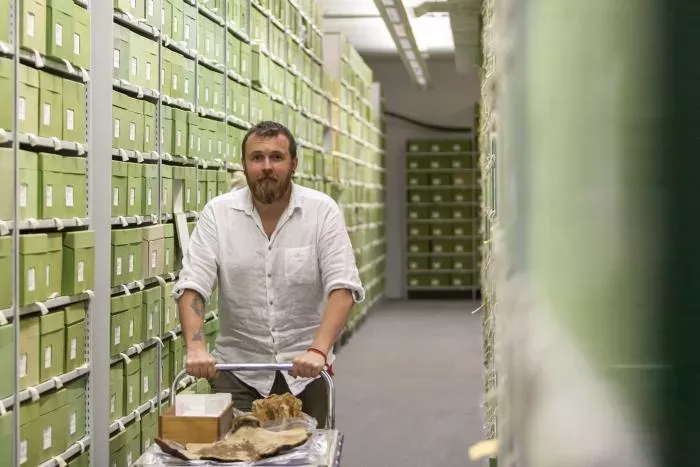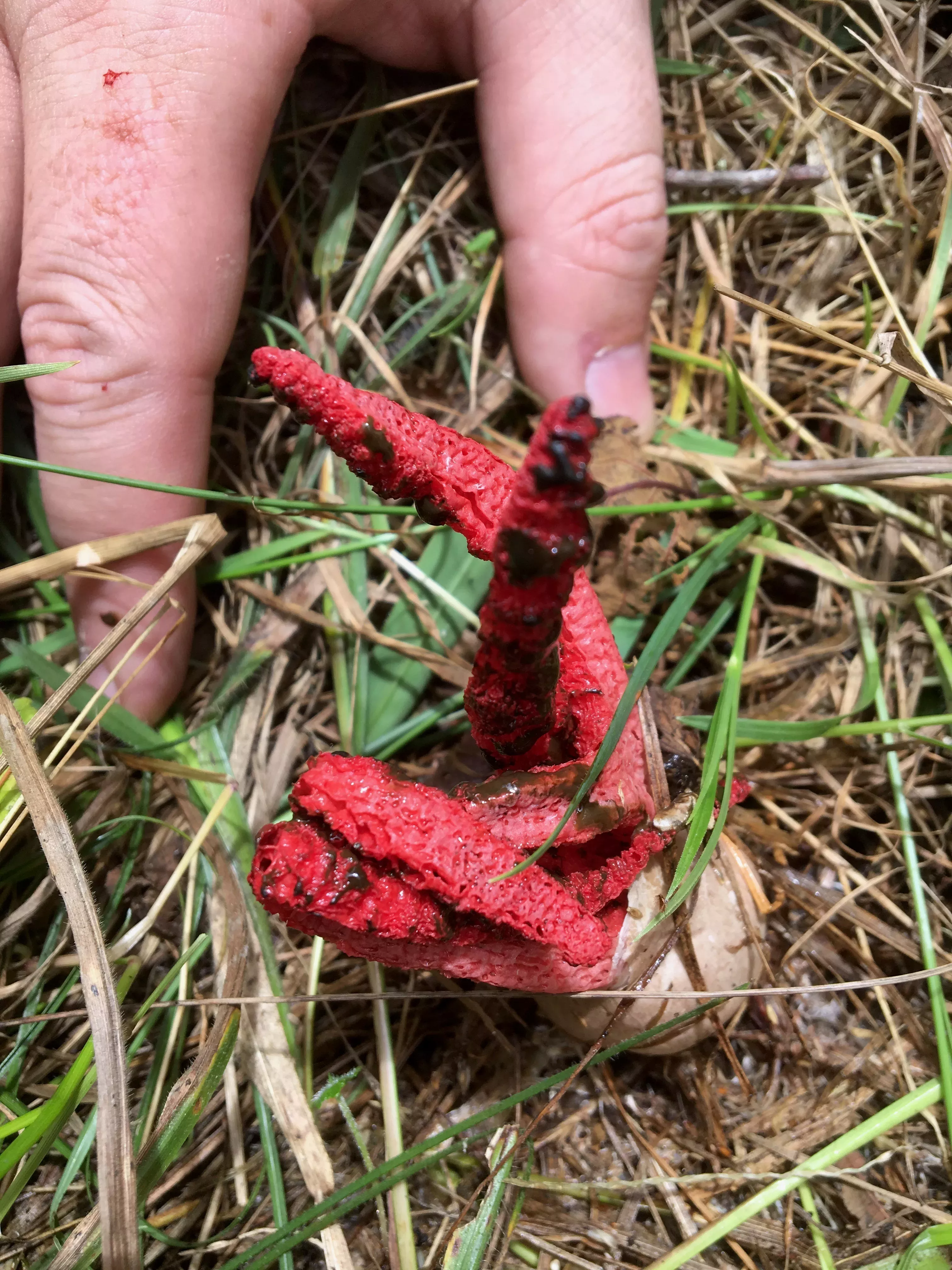17 September 2018
Fungi-themed Q&A
Fungarium curator Lee Davies took over the Kew Science Twitter and Kew Gardens Instagram channels for Ask a Curator day. Here is a selection of the questions that he received.

Q: Do you have slime moulds in your fungarium, or do they have their own 'arium?
A: Although they aren’t fungi, they used to be considered them, so we do have a small collection (the Natural History Museum has the national collection). Sadly the world isn’t ready for a ‘Slimarium’ or ‘Myxologicum’.
Q: I once saw corn smut on a menu of a trendy restaurant...how bad of an idea is it to eat this?!
A: It's actually a delicacy in Central and South America, its sold in cans in shops. Definitely edible.
Q: Can you tell straight away by just looking if a fungi is poisonous or not?
A: In some cases it's easy - some of the most horridly poisonous ones are distinctive looking. That said, they can be confused with close relatives which are edible, and people can unfortunately poison themselves.
Q: What’s your favourite fungus and why?
A: I like loads of fungi, my favourite group, however, are the Stinkhorns, this family has the squid fungus in it. It’s also the smelliest species we have in collection – they smell like rotting meat and faeces….
Q: How do you store your collections? Are the fungi being grown, pressed (like flowers) or something else entirely?
A: Every specimen gets its own packet, these are stored taxonomically in folders and then in huge compactors of boxes. After the fungi are collected and brought here, we dry them in something like a giant food dehydrator. Then they get incorporated.

Q: Why do you dry the specimens?
A: Drying means we can store them. Simple drying has always been used – we have specimens that are 160+ years old that have been preserved like this.
Q: For what purpose are the collections used for, other than maintaining a vital record?
A: There is a lot of work going on at the moment to sequence the DNA of the specimens, so we can look at fungal diversity and evolution. The collection is also a potential bank of new compounds for industrial or pharmaceutical use.
Q: I’m a fan of your nearly-100-years-ago predecessor EM Wakefield. ‘Back in the day’ accurate illustrations of fresh specimens used to be important - being good at watercolors was part of the job! Does modern curation have anything like that or is it all photos & DNA now?
A: The illustrations we have are STUNNING (there's a small exhibition on this month in the Kew Library, Art and Archive on just this), these days it is DNA and photos. Mostly because DNA is far superior for identification. Still a shame to lose the skill.
Q: How fantastic! Any EM Wakefield or Potter stuff in the material you’re digitising and will any be shared online? A pipe dream of mine is to write a short biography of Wakefield - it’s fun reading her foray notes in the journals of the British Mycological Society from the 20s/30s.
A: We are on the cusp of looking into the copyright status of the EM Wakefield illustrations (there are certain copyright laws when the artist has passed away in "recent" years). Some of her work is currently in the Kew Library, Arts and Archive mycology display - do come along if you can!
Q: Do mycologists gather duplicate specimens for distribution to different institutional collections, like the botanists do?
A: We do! Not as many as the botanists can do as they have a whole tree to take specimens from, whereas we might only have 1 or 2 mushrooms. For the Colombia fieldwork we were part of for instance, the 'top' specimen will stay in Colombia and Kew gets any duplicates.Q: What’s the most amazing thing that you’ve heard a fungus being used for?
A: Otzi is the 5000 year old Iceman who was discovered frozen in the Italian Alps. He was carrying two types of fungus with him, a Birch polypore and a Hoof fungus. We think one was used for lighting fires and the other has antimicrobial properties.

Q: Where are your specimens from?
A: We have specimens from just about every country on the planet.
Q: How can fungi benefit plants?
A: BIG question this! They are the main recyclers of organic matter which allows plants to feed, and 90% of plants need a fungal symbiote to thrive. Without fungi, ecosystems would collapse.
Q: Are fungi found on every continent?
A: They are indeed. Even in Antarctica there are lichens. Plus, the oceans are stuffed with fungi, we’re still scratching the surface.
Q: Are new fungi still being discovered and brought into storage?
A: Yes! We incorporate 4000+ every year (a good chunk of these are collected by our mycologists)
Q: Are there any rare or endangered fungi?
A: We have fungi that are rare in the UK such as the lion’s mane fungus.
Q: How do you become a curator?
A: This is a tough one. The key would be to get a degree in your chosen subject. Maybe something at a postgraduate level too (although not essential). You could also volunteer with curators to get experience.
Q: What is the environment of the fungarium?
A: It’s kept at 19°C so in the summer it’s popular place for our staff to hang out! Relative humidity is kept to 50–55%. These conditions prevent pests and preserve specimens.
